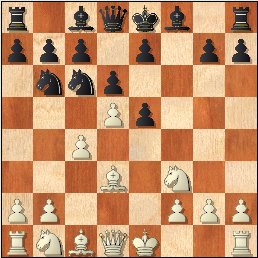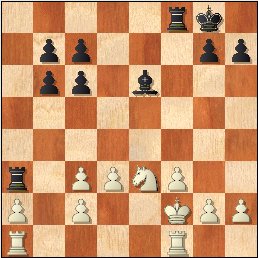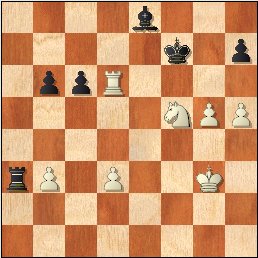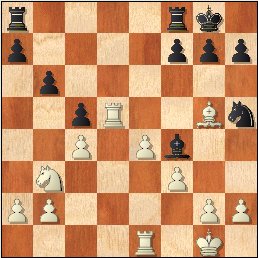Holiday Special $$ offers - New books and Savings
|
|
New Chess |
Holiday Special $$ offers - New books and Savings
|
Lessons from the Simul (part 1)
ACTIVE LEARNING is any strategy that involves students in doing things and thinking about the things they are doing (*)
A few
days after I got my latest book "Chess Exam Matches: You vs. Fischer" from the
printer, my good friend Nigel Mitchell invited me to do a simul and a
presentation of my book at the
North Penn Chess Club (NPCC) in Lansdale, PA, where he is
one of the officers. I eagerly accepted, recalling fond memories from my past tournaments
there in the 90s and
a simul a couple of years back. The final details were
worked out with Eric Funk, another officer of the club. Finally, on December 11,
I arrived at the club and saw many of the familiar faces, among them
Don Funk, Bob Kampia and Father Farrell, as well as some new faces.
I spoke a bit about my career as a player, a coach, and about my books. Then
Eric reminded everybody that I haven't lost at the NPCC yet and suggested they
try
changing it that night. This friendly note, along with some cocky comments from a
high school kid who was eager to challenge me, set a competitive tone to the night. I certainly
welcomed this and was looking forward toward some exciting games.
As it happens so often in the movies, the loudest "mouth" (the kid) went down
first. He certainly has skills and my main suggestion to him was to relax a
little. Then, one by one, the remaining competitors fell. I spent a couple of
minutes with each player discussing highlights of our game. Some of these key
fragments you will find below.
In a subsequent "thank you" e-mail, Eric expressed gratitude and conveyed
positive feedback from the participants. I'm looking forward to future visits to
the NPCC and will always be happy to give them a chance to score that elusive
victory!
Lesson 1: Sharp openings require good preparation
 |
Black to move. What to do with the c6-N?
Igor - Don This wild position is from Alekhine defense. Don had to play
8...Nb4 with
unbalanced position. Instead, he played 8...Nd4?, which, after 9.Nxd4 Pxd4,
allowed my Q to get to h5. After a typical 10.Qh5+ Pg6 11.Bxg6+ Pxg6
(12...Kd7 13.Qf5+ Pe6 14.Qxe6#) 12.Qxh8, White won the exchange. Black
had some compensation, but erred soon and lost. |
Lesson 2: Assessing placement of the pieces is a key component of creating a
plan
 |
White to move. What to do about Black's assault on
the Q-side?
Igor - Eric A little while earlier, Eric had sacrificed a Pawn and got some initiative on the
K-side. I traded the Qs, and calmed things down there, but now my Q-side is under
assault. In fact, I saw no way to save both the a2-P and the c3-P. So, I've decided to
launch my own attack based on the more flexible P-structure and a temporary misplacement of
the Black pieces. Indeed, after 19.Pc4! R8a8 20.Pf4 Rxa2 21.Rxa2 Rxa2 22.Pf5, the R on a2 had no impact and the B on e6 had no
targets and was an easy subject of my attack. |
 |
Black to move. Can he take the b3-P?
10 moves later we arrived to the following position. Eric sacrificed one of his Ps, hoping to get one back quickly, but then he saw that he would have been checkmated if he took the b3-P - 34...Rxb3 35.Rf6+ Kg8 36.Ne7+ Kh8 (36...Kg7 37.Ph6+ Kh8 38.Rf8#) 37.Ph6. In view of the checkmate on f8, Black must give up the B. Nevertheless he will be checkmated in 7 moves (check for yourself if interested) Instead, Eric pulled the R back. Still the position was lost - 34...Ra7 35.Pg6+ Pxg6 36.Pxg6+ Kf8 37.Rd8 Rd7 38.Pg7+ Kf7 39.Rxe8 1:0 |
Lesson 3:
Do not be afraid to go into complications when you have material advantage. Just
use extra caution when calculating!
 |
White to move. How
should he proceed?
Igor - Will Earlier, I won the e-P, and now could probably cruise to the victory, thanks to a good
placement of my piece. However, when I saw an opportunity to inflict more damage
on Black's position, I didn't hesitate: |
Lesson 4: When defending, keep passive until you are certain that you are ready
to strike.
 |
White to move. How
should he proceed?
Igor - Nigel Over the past 2-3 moves, Nigel's pawn on h6 seemed like a juicy target, but I didn't feel like I had enough attacking power. Also, the position was closed, making my attack somewhat of a gamble. However, the most recent explosions that Nigel had started in the center gave me a necessary jump-start. Black just sacrificed the N on e4 (14...Nxe4 15.Bxe4 Pd5) and expects to win the B back (e.g. 16.Bd3 Pe4). Instead, I grabbed the h6-P - 16.Bxh6! (White has other winning moves as well - e.g. 16.Pxe5 or 16.Nxe7+ Rxe7 17.Bf5) Pf6 (16...Pxe4 17.Bxg7) 17.Bxg7 Pxe4 18.Qh6 and soon Black resigned. |
To be continued...
==============================================================================================
What do you think about this article?
For comments,
corrections send email or use
this
form
More on chess training (serious and enlightening) in my books:
|
|
Chess Exam and Training Guide (2004) $24.95 + shipping Chess Exam and Training Guide: Tactics (2007) $19.95 + shipping Chess Exam You vs. Fischer (2009) $21.95 + shipping CE + CE Tactics (Holiday Special! Free chess cartoon calendar $8, while supplies last) - $39.95 - insured shipping in US is included CE + CE Tactics + CE Fischer + (Holiday Special! Free chess cartoon calendar $8, while supplies last) - $59.95 - insured shipping in US is included The new Chess Exam is here ... |
Copyrighted @ 2009 Igor Khmelnitsky
For comments or permission to reprint please send inquires via email or this form
(*Bonwell, C., & Eison, J. (1991). Active learning: Creating excitement in the classroom (ASHE-ERIC Higher Education Report No. 1). Washington, DC: George Washington University, p. 2)